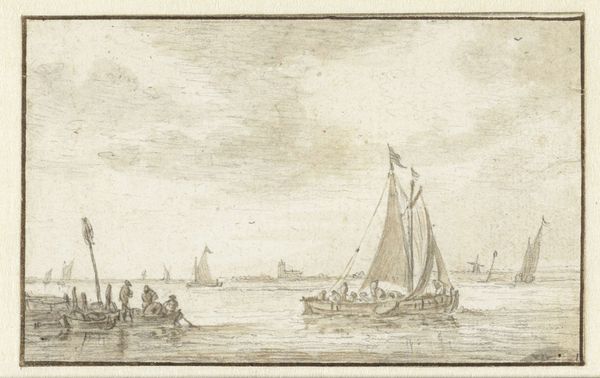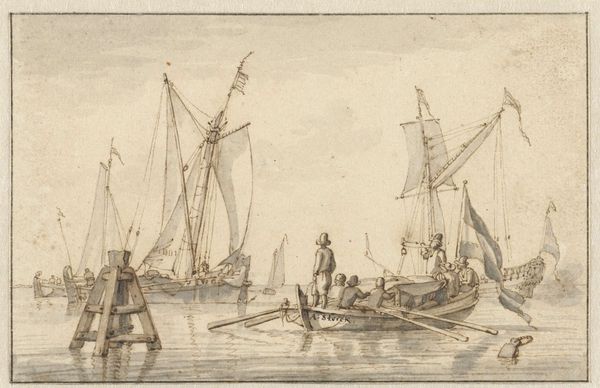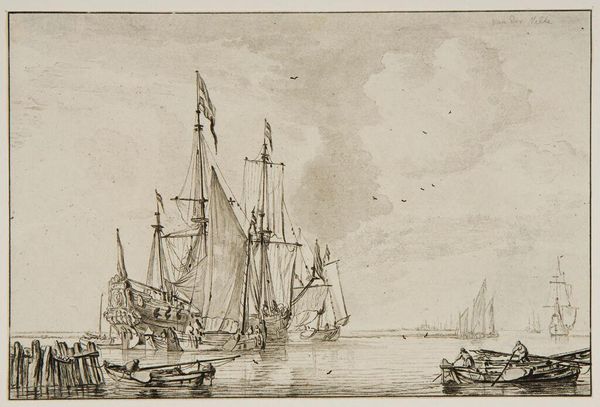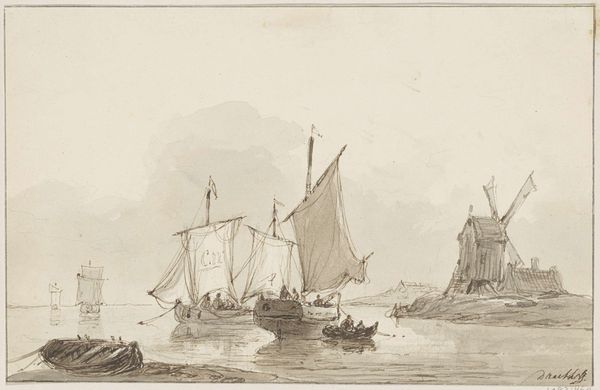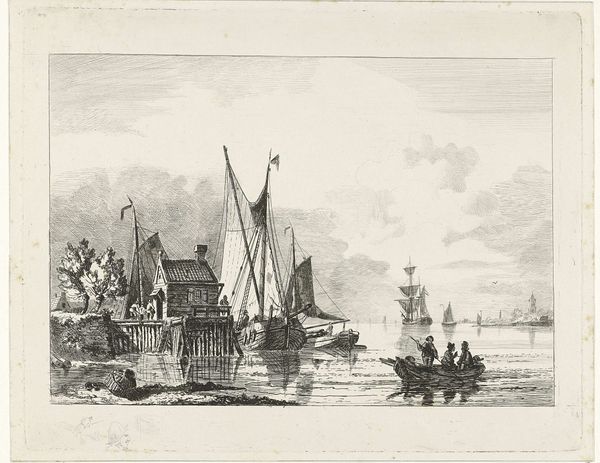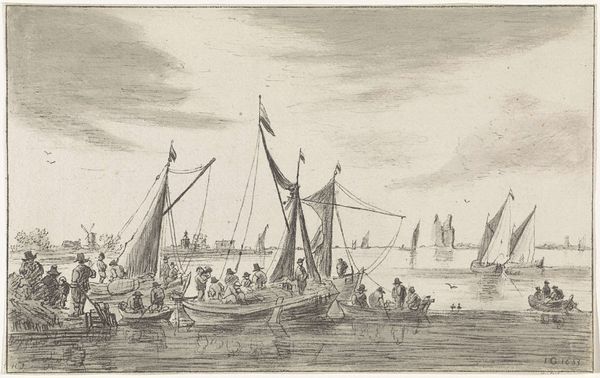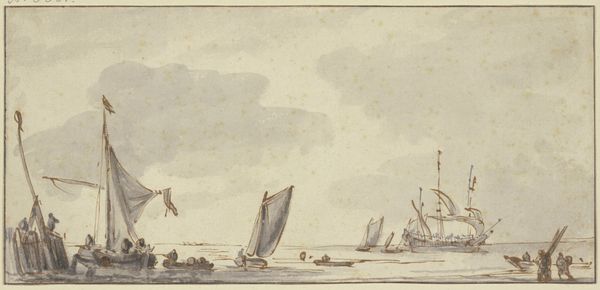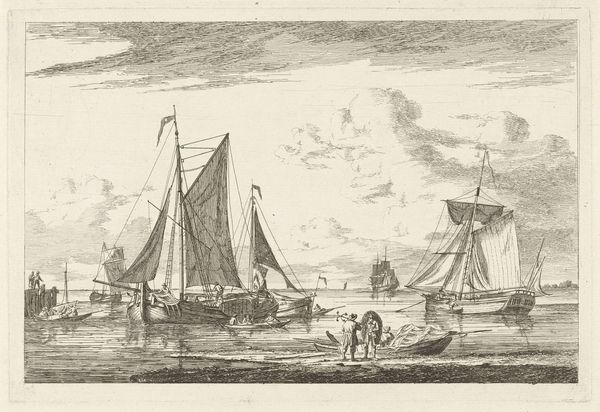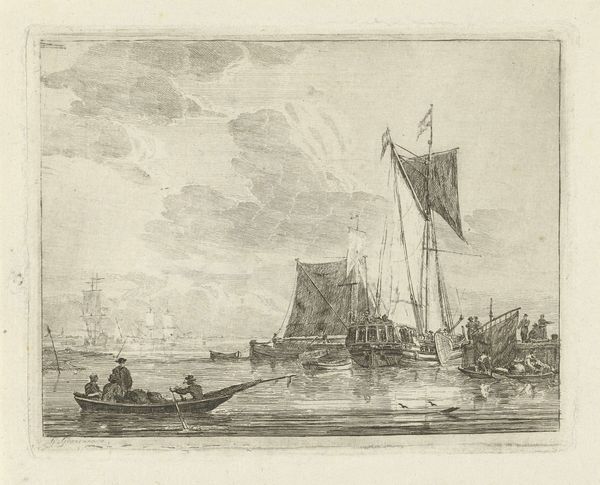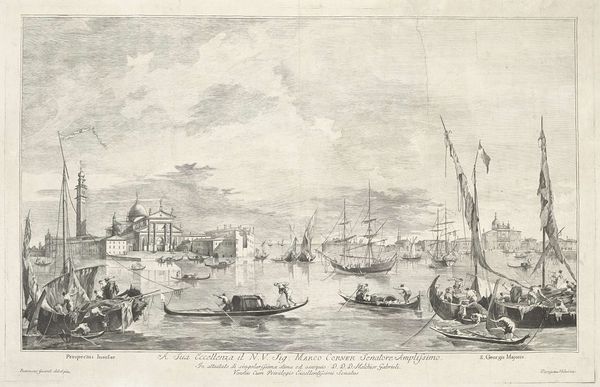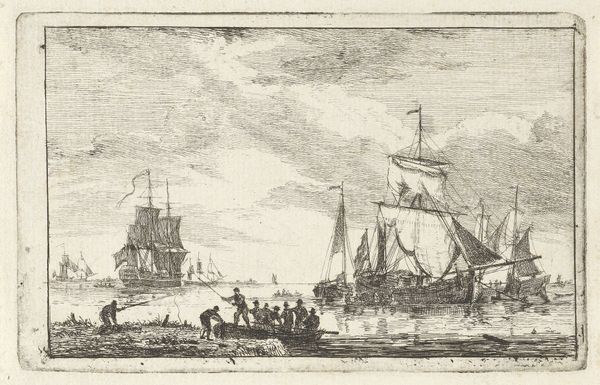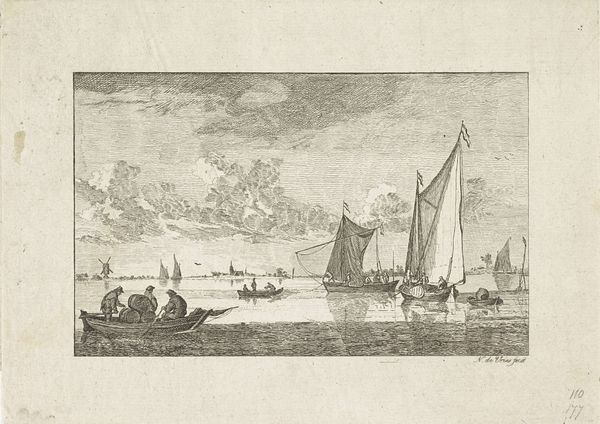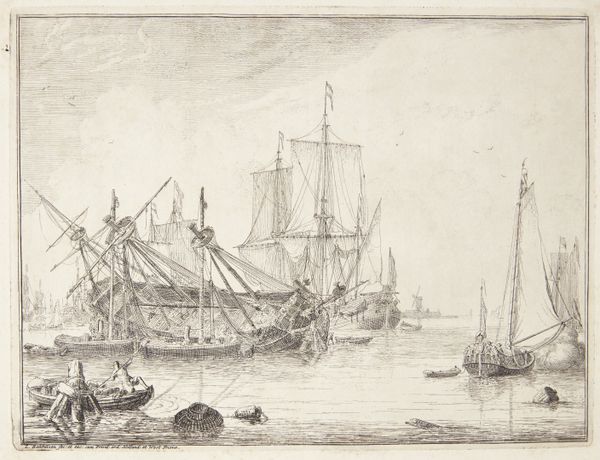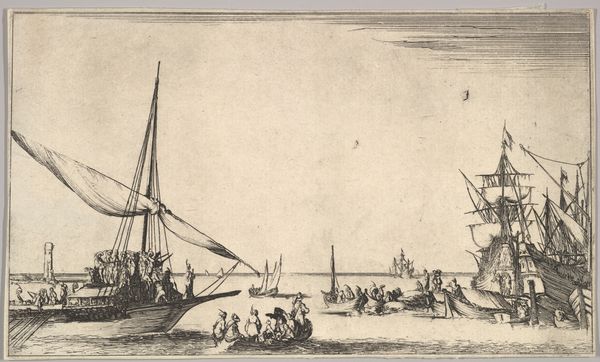
drawing, paper, ink
#
drawing
#
aged paper
#
toned paper
#
quirky sketch
#
dutch-golden-age
#
pencil sketch
#
sketch book
#
landscape
#
paper
#
personal sketchbook
#
ink
#
sketchwork
#
sketchbook drawing
#
genre-painting
#
storyboard and sketchbook work
#
sketchbook art
Dimensions: height 92 mm, width 142 mm
Copyright: Rijks Museum: Open Domain
Curator: What strikes me immediately about this piece is its airy, almost unfinished quality. The delicate lines and muted tones evoke a serene coastal atmosphere. Editor: Indeed. We're looking at "Riverbank with Some Ships," a drawing created around 1683 by Abraham Storck, a prominent figure in Dutch Golden Age painting. It’s rendered in ink on paper, a quick sketch that showcases Storck’s keen observation. What interests me, from a social history perspective, is how commonplace maritime scenes like this were becoming as the Dutch Republic cemented its status as a major trade power. Curator: Absolutely. The composition, while simple, guides the eye effectively. Storck uses linear perspective to create a sense of depth, placing emphasis on the cluster of figures in the foreground before moving to the various vessels, like a complex balletic dance of masts, sails and hulls in the mid-ground. Editor: Note too how the placement of these figures and ships in the harbor serves as visual testament to Amsterdam's thriving port, reflecting its economic vitality during that era. Storck, along with other painters like the van de Veldes, captured and even perhaps mythologized that Dutch dominance. Curator: Precisely. You get a very real sense of hustle and bustle here, despite the simple aesthetic. Look at the textural contrast he creates solely with these understated techniques! The aged, toned quality of the paper even accentuates the antiquity and fragility of the scene. Editor: These works also give us insight into the artistic process itself, since drawings are often preparatory sketches. Consider how the social conditions – a wealthy merchant class, the expansion of art markets – gave artists like Storck greater economic freedom to create. It facilitated more explorations in landscapes and genre scenes and beyond religious painting. Curator: That makes perfect sense. These drawings become windows into understanding the aesthetic priorities of that society. Storck’s focus on capturing fleeting moments, atmospheric conditions and simple visual harmony really speaks to a nascent Dutch national identity. Editor: The artist really was participating in creating and broadcasting national pride through artwork, I would agree. In viewing Storck’s work today, we gain insights not only into artistic techniques, but also into the culture, aspirations, and self-image of the Dutch Golden Age. Curator: And a rather beautiful distillation of that all, I would say. Editor: Agreed, a simple, unassuming yet deeply evocative portrait of an age.
Comments
No comments
Be the first to comment and join the conversation on the ultimate creative platform.
